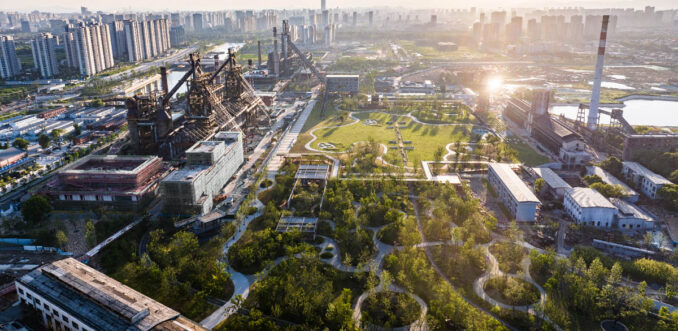
Hangzhou Grand Canal Steelworks Park is an urban restoration project on the site of a former steelworks with a 70-year history. The dormant industrial site shuttered in 2016 has become a social and economic engine through transformation and functional revitalization. In the design, the original environment is preserved to the greatest extent, and all the historical remnants and memories are respected, recycled, or repurposed to fit into the contemporary lifestyle. Guided by the principle of “harmonizing tenderness and toughness,” an echo of the former Steelworks’s ethos, the park’s landscape design delicately intertwines industrial remnants with the natural environment, forging a dynamic art and culture nexus for all to enjoy.
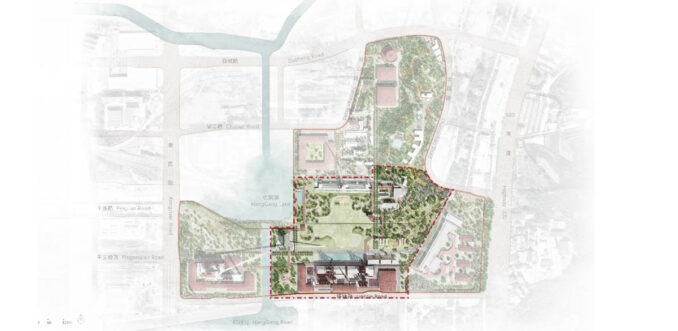
Site History
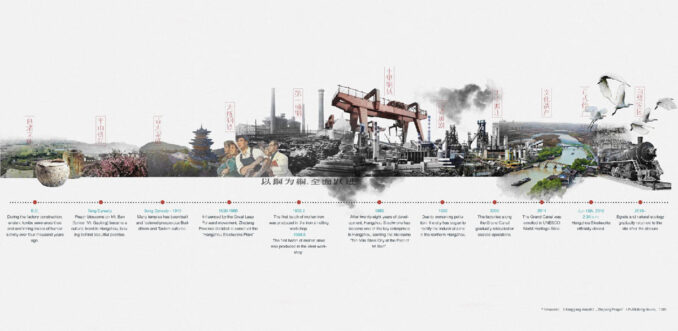
Established in 1950 along the Grand Canal, the Hangzhou Steelworks stood as a symbol and cornerstone of heavy industry within the city’s typical Shan-shui landscape. However, the factory ceased operations in 2016 due to growing environmental concerns, particularly as the Grand Canal was recognized as a UNESCO World Heritage Site. Left behind were the silent remnants of multiple furnaces, coke ovens, and steelmaking workshops, along with the collective memories of the site. As nature soon reclaimed the once industrious grounds, in 2018, the Authority decided to build a new park with mixed-use commercial spaces to revitalize the northern Grand Canal area.
Design with Culture
“Harmonizing the toughness and tenderness” was the slogan of the Steelworks factory. It boasts the products’ exceptional quality can match the legendary Longquan Sword —a flexible yet sharp sword that cuts through metal effortlessly. This duality also mirrors the existing condition of the site, where the spontaneous landscape embraced the gigantic structures and made a juxtaposition of strength and sensitivity. The designers aim to interpret and perpetuate this philosophy, weaving it into every aspect of the design – from the overarching framework to the finest details.
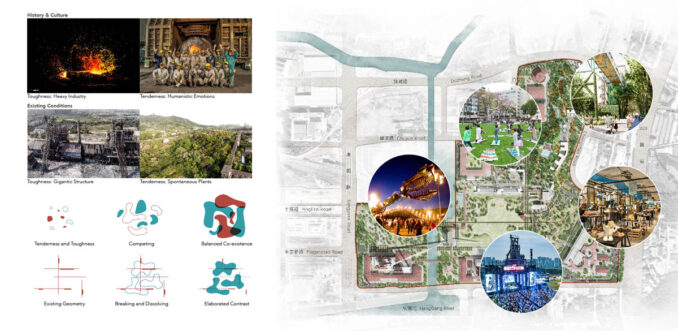
Free-formed landscapes serve as transformative agents, reshaping the site’s ecology, harmonizing the brownfield, and dissolving the psychological distance with industrial remnants. The programming aims to create both “boiling points” and tranquil, introspective spaces. At the material level, the design intentionally introduces delicate, lightweight materials, crafting an interplay and contrast with the ruggedness of the industrial relics, thereby delivering a distinctive experience.
Revitalizing Relics
The industrial relics have been reconnected to their original functions while infused with contemporary programs. Instead of keeping them as static objects to be preserved and sculpted, the design encourages active engagement, immersion, and reflection on them.
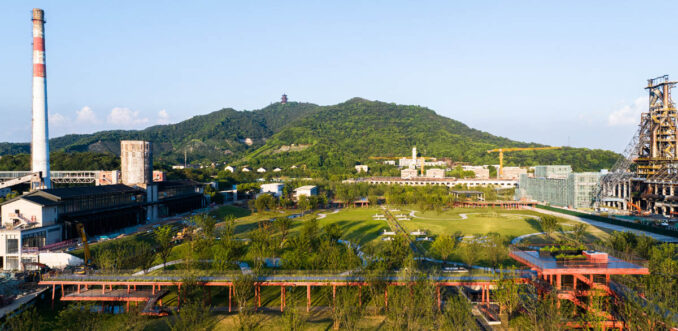
Habitat Restoration
The team conducted comprehensive research on the composition, distribution, and habitats of the existing flora and fauna. The designers removed the invasive tree species and carefully introduced native plants to foster biodiversity and ecological stability. The rehabilitation of a little mountain on the site and the introduction of new forests further extend the tenderness inherent in nature and ecology.
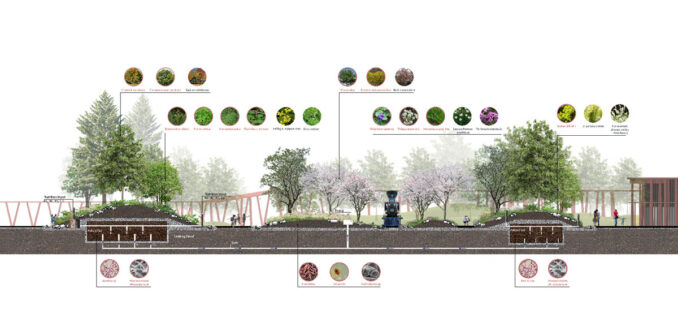
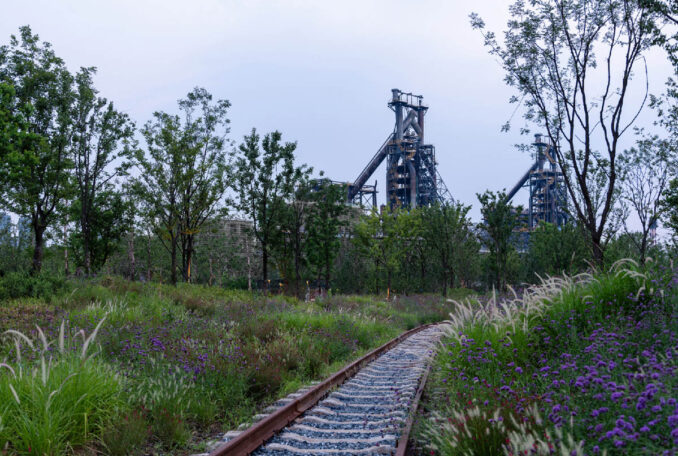
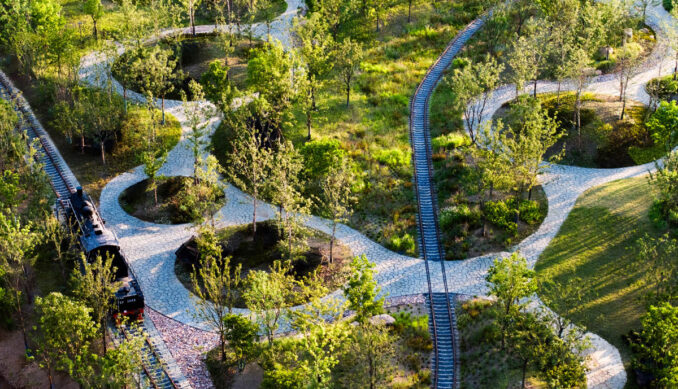
Perpetuating Site Memory
Inspired by the intriguing interplay between industry and nature following the factory’s closure, the designers have retained the original environment as much as possible and maximized new programs in the original features on the site. New trams will run on the former factory train tracks, exciting events will fill the old warehouses, while office spaces, bookstores, and hotels are proposed to the furnaces and coke oven. Some structures had to yield to safety imperatives, yet most materials have found a second life through recycling and innovative repurposing into landscape design.
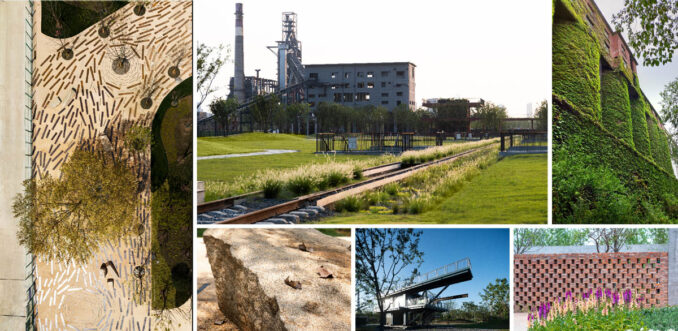
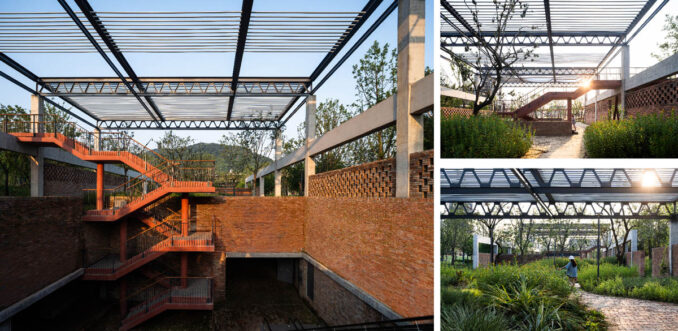
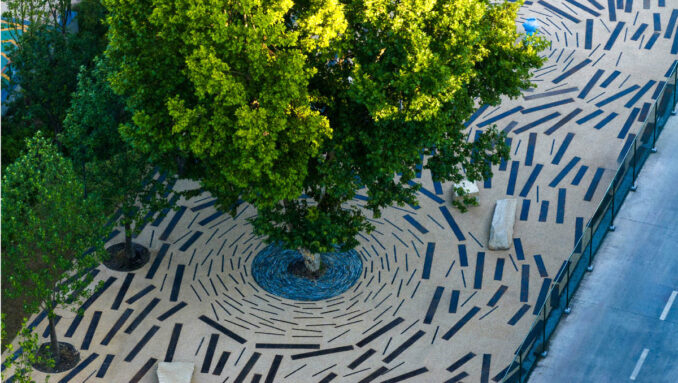
A Social Engine
The park is planned to evolve into a vibrant hub for artistic and cultural events such as “Burning Man,” edgy art installations, and music festivals. This creative tapestry will be infused with a “tough” industrial energy inspired by the site, evoking both the symbolic and tangible fires that once roared within the furnaces. The first event in the park, the Strawberry Music Festival, took place in June 2023 and attracted over 10 thousand people.
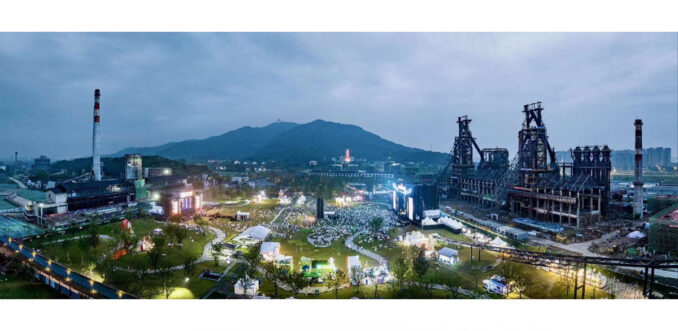
With its positive urban impact, the design has created a vital social nexus for the citizens and pride for the former works of the steelworks. The park’s 2024 program calendar is full, and the rent of the business spaces in the park and nearby is growing steadily. It provides funds to enable the development of Phase 2 and other sites of the northern Grand Canal. The park has not only brought a new green space to the city, but also a paradigm of discovering ecological, economic, and social value from post-industrial sites.
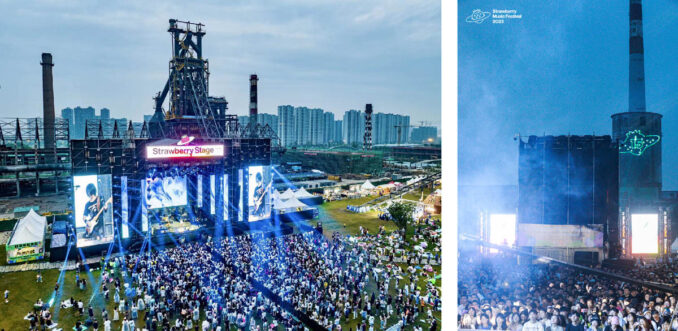
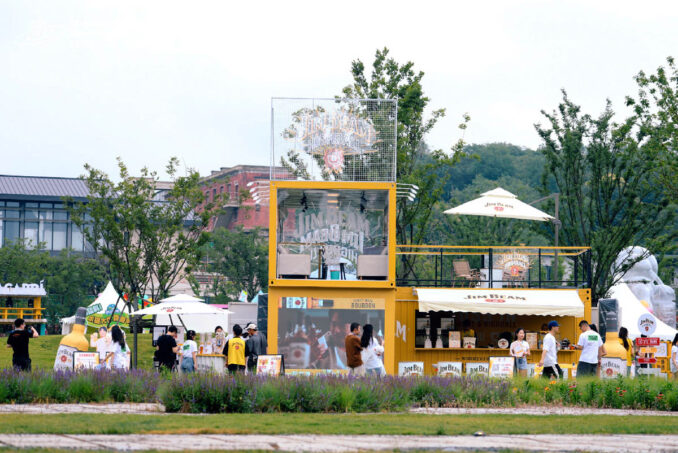
Hangzhou Grand Canal Steelworks Park – Phase I
Location: Hangzhou, Zhejiang, China
Landscape Architect: TLS Landscape Architecture
Lead Designer: Tom Leader, Jiawen Chen
Client: Hangzhou Grand Canal Development Group
Architect: Jiakun Architects
Local Design Institute: Architectural Design & Research Institute of Zhejiang University co., Ltd (UAD)
Photographer: Chill Shine Photography, Strawberry Music Festival, TLS

Be the first to comment